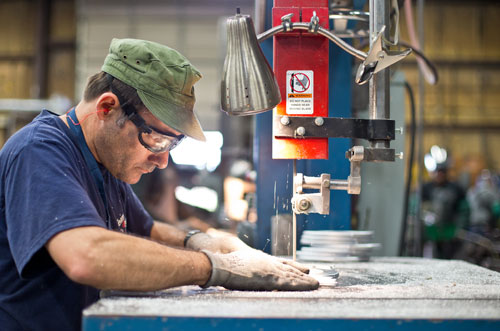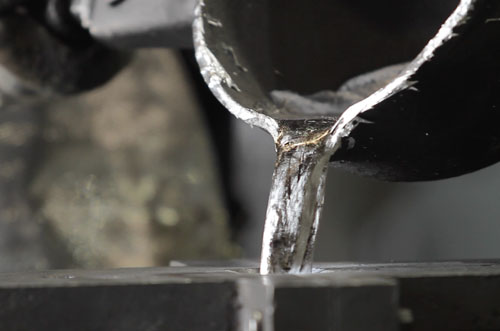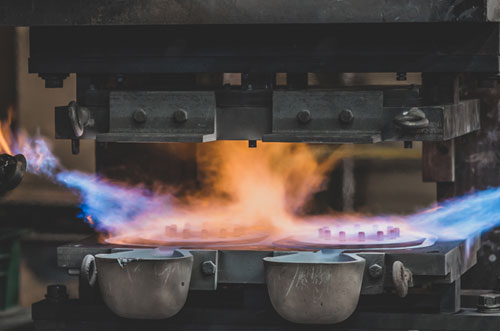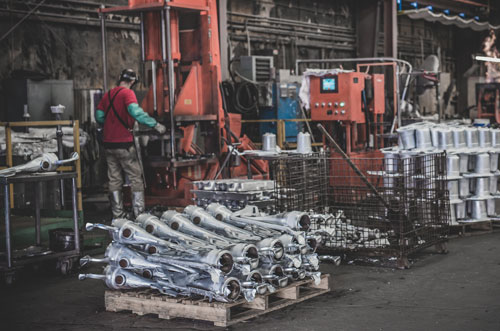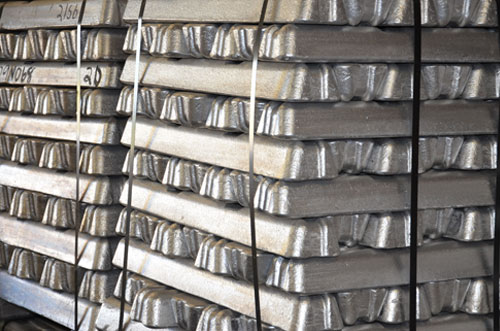OUR PROCESS
Menu
AFTER CREATING THE MOLD, WE TAKE IT TO THE FOUNDRY
- LA Aluminum’s foundry only melts the best certified aluminum alloy ingot. In addition, our specialty is casting alloy A356, though others are no stranger to us.
- First, we place aluminum ingots into crucibles and heat them to approximately 1,350 degrees Fahrenheit. Our melting capacity is 5,600 pounds per hour.
- Following this, we preheat and coat the internal surfaces of the mold with a refractory material. Next, we ready any inserts and assemble any cores.
- Temperature control is critical in all aspects of the pouring process. As a result, we use thermocouples and infrared temperature sensors to ensure temperature control.
- First articles, or the first castings poured from a new tool, must pass our quality inspection and tests before sending to you for evaluation.
- Once we receive your approval, the molds are ready for full production.
Our foundry specializes in permanent mold casting, also referred to as gravity die casting or permold. We use three basic casting method variations: Static pour, tilt pour, and reverse tilt pour.
- The permanent mold cast method refers to the use of gravity to feed molten aluminum into a reusable mold or die. The mold is commonly made from 4140 steel or iron durabar.
- Using the static pour method, the preheated molds are set into a stationary base. Molten aluminum is then poured into a spout located at the top of the mold. After a set amount of time, the mold opens and the casting removed.
- In contrast, the tilt pour method, molds are set horizontally into a hydraulic actuated tilt machine. Aluminum is then ladled into pour cups attached to the mold. Next, an operator initiates the machine to tilt vertically to allow aluminum to fill the mold cavity. After a set amount of time, a programmable control positions the mold back to the horizontal position. Finally, the mold opens and the castings removed.
- With traditional tilt pour method, the mold parting line is perpendicular to the floor. Whereas, with reverse tilt pour, the parting line is parallel to the floor. Reverse tilt pour is ideal for castings with radial type geometry, such as: wheels, hubs, compressor housings, and cookware. Likewise, this method is not limited to radial type castings; it’s also used to cast parts like high performance brake calipers.
- Some part designs call for the use of a steel core or sand core (also called shell core) to hold the inner dimension or hollow section of a part.
- Steel cores generally operate mechanically in the mold and are reusable.
- Sand cores or shell cores are set in the mold before closing. This is also referred to as semi-permanent molding.
- Lastly, our foundry removes the sand core from the casting by using a vibratory process to break it out. This is sometimes called “shake out.”
- Once we remove the gates and risers, the castings are carefully loaded and staged for heat treat.
- Our Drop Bottom heat treat and age oven heat treat ovens are annually certified for uniform temperature.
- In addition, the temperature and amount of time determines hardness and alloy mechanical properties. As a result, we typically heat treat castings to a T51 or T6 condition. Lastly, we verify by testing the casting’s hardness to your specification.
Have a Question?
Talk to one of our specialists with any questions you may have.

